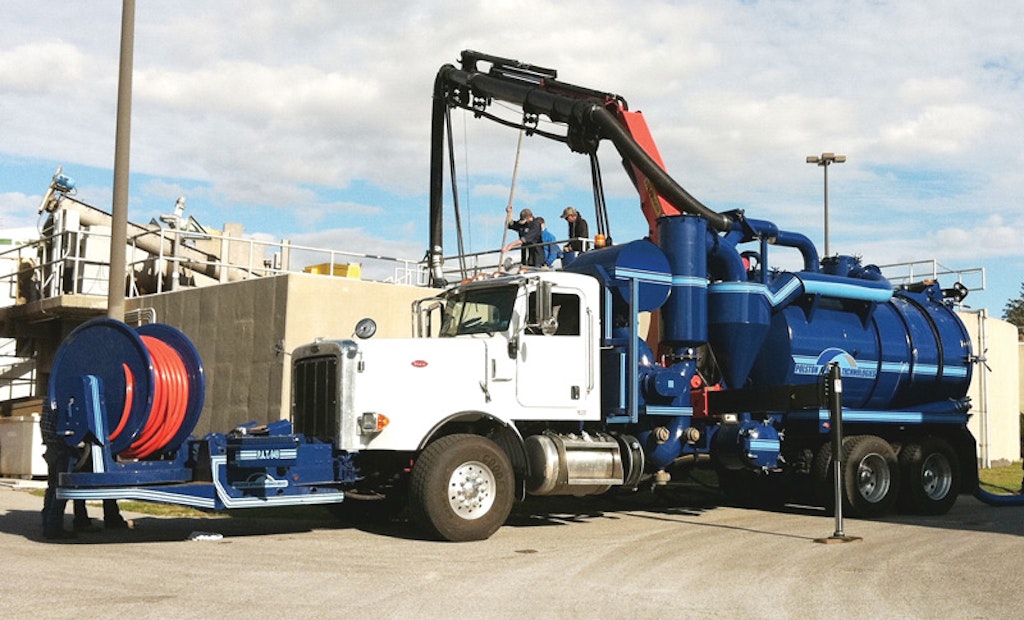Interested in Trucks?
Get Trucks articles, news and videos right in your inbox! Sign up now.
Trucks + Get AlertsThe PAT 949 combination vacuum pump/separation truck from Polston Applied Technologies provides a standalone cleaning system for large-diameter lines, digesters, grit chambers, lift stations, water treatment plants, ponds, lagoons and other difficult-to-clean environments.
In addition to performing as a vacuum truck, the combination unit features a down-hole pump that pushes submerged material into a pressurized system that separates it from the water.
“The Polston Process leaves sand and grit paint-filter dry for normal disposal,” says Denver Stutler, chief executive officer for Polston Technologies. “It’s basically separating sand from water as it runs through our proprietary process.”
Debris dumps into the truck’s 9-yard steel tank or a roll-off container. Biosolids are emulsified in the pumping process for easier microbe digestion.
“I tell people it’s like finding a clump of fish food at the bottom of the tank and bringing it to the top and crumbling it,” Stutler says.
The debris tank has a full-opening rear door (power up/down) and 45-degree dumping angle with manual door locks, level indicator and internal float shutoff. A 1,000-gallon, fully baffled tank provides water for the front-mounted jetting system (Hammelmann 146 triplex pump, 120 gpm and 2,300 psi) with 500 feet of 1 1/4-inch, 2,500 psi hose and 800-foot reel.
“We have a proprietary pump (hydrostatically driven, boom mounted, 6-inch submersible with six-blade impeller) that Mr. (Henry B.) Polston designed. It sits in the water, grabbing material and pushing it into the truck,” Stutler says. “The vacuum side of the truck is not used when we’re using our down-hole pump.”
Powered by a 425 hp Cummins diesel engine, the unit can pump and separate sand from water at depths of 27 feet and more.
“We see a lot of opportunity wherever sand and grit accumulate,” Stutler says. “Wastewater treatment plants are an area where we focused our efforts because a large majority of them in the United States cannot be shut off. Throughout the plant we can remove the sand while it continues to operate.”
The truck has a 49-foot hydraulic articulating knuckle-boom crane with an 8-inch intake hose, wireless remote control and 180-degree rotation.
Mounted on a Peterbilt 367 chassis, the truck has a front PTO, 22,000-pound front axle, 46,000-pound rear axle and Roots 824 RCS positive displacement, hydrostatic-drive vacuum system that delivers 16-inch Hg at 3,600 cfm. Added features include a CDF-10 silencer, 3-inch vacuum relief valve and micro filter/centrifugal separator. A control panel is located at the front of the truck.
“It’s quiet enough where you can stand touching the truck and talk on a cellphone,” Stutler says. “It sounds like busy traffic near you.”
Options include cold weather circulation, increased water capacity and remote controls. 866/862-7271; www.polstonprocess.com.






